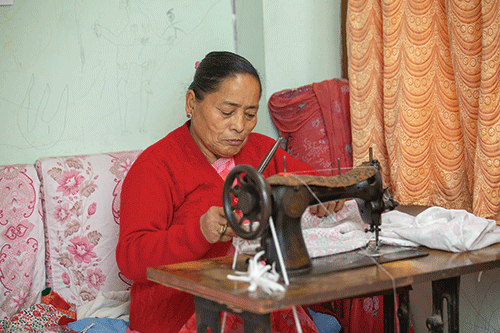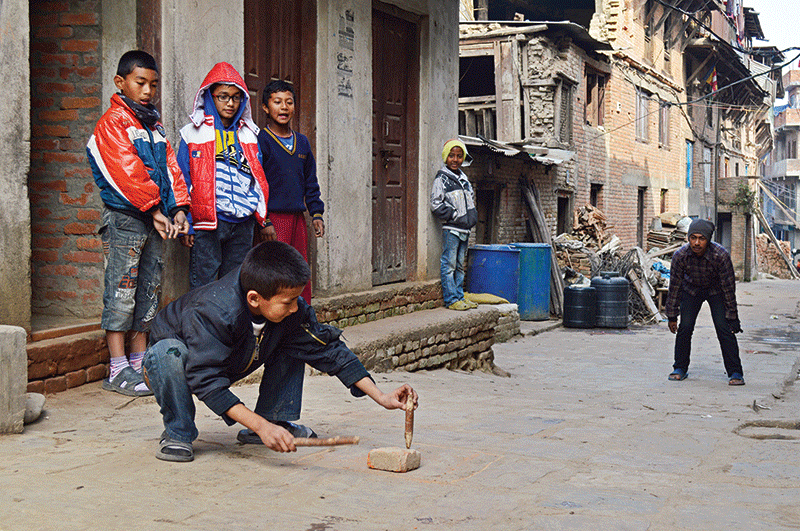DHOBY GHATS – each morning the holy ghats become dhoby ghats as the dhobies line up along the purpose laid rocks to beat the clothes into submission and cleanliness. Not the place to send your best silk shirt but for cotton it only adds to the softness and wearability.
 Girls scratch a living selling flowers and candles to pilgrims and tourists. One of the most beautiful sights is a string of 108 (a holy number) candles being released into the river just after sunset. The flickering light from the string of candles can be seen for miles as they make their way gently downstream.
Girls scratch a living selling flowers and candles to pilgrims and tourists. One of the most beautiful sights is a string of 108 (a holy number) candles being released into the river just after sunset. The flickering light from the string of candles can be seen for miles as they make their way gently downstream.
A woman flower seller gazes meditatively out across the misty Ganges, most beautiful in the early morning before the crowds appear. The serenity of the early morning is reason enough to visit the holy city. Scented flowers and candles are a daily part of life in Benares society. Pujas, offerings to the deities, to the temples, to the Ganga all revolve around flowers.
A couple enjoys a quiet moment in the early morning. The holy river is Benares’ lifeline and millions of visitors flock here
each year especially at festival times They come to wash away their sins, to purify themselves in the holy waters and to ensure a smooth passage to the next life.
The ancient city of Benares, has grown on the banks of the Ganges, India’s holiest river. This city of myth and legend has been in existence for millennia and while no one knows its exact origins , local belief has it that it has been in existence forever.
The holy city is also the city of many names. Kashi is the oldest name and it means “concentration of cosmic light”. According to a text dating from the 15th century, “Kashi shines and illuminates the universe. Kashi makes moksha (liberation) dawn on everybody by giving wisdom.” The people who lie in wait for tourists about the ghats will simplify this wisdom and tell you that Benares is the city of “learning and burning”.
Varanasi sits at the confluence of two rivers, the Varana and the Assi, both of which empty into the Ganges and gives the city another of its names. Buddhist literature like the Jataka or tales of the Buddha refer to it as Banaras or Banarasi, a Pali version which was changed by the British to “Benares” . There are even more names such as Rudravasa or the “City of Shiva” or Mahasmashana or “the great cremation ground.”
But names aside, Kashi is as significant today as any time in its history. Every year millions of pilgrims come to wash away their sins and to purify their life, preparing for the afterlife and ensuring their passage to the heavens. Tourists make their own pilgrimage. Some come on huge groups, stopping just long enough to see the sights and take a mandatory boat ride along the ghats - for others it is a stop on the grand tour of India. Some come for more personal reasons -to learn yoga or sitar, to seek a truth, a teacher. Some never leave.
The most dramatic attraction for many foreign visitors are the burning ghats. People in the west are generally kept from death and it is something of a revelation to be able to see bodies, swathed in white cloth cast atop huge wooden pyres, flames licking at their limbs. It can be a release both for the body, whose soul is released and for those watching who may have never experienced such a thing before.
The city is India at its most extreme. Although it is one of the most crowded, it is also the most holy Hindu city , and ironically has one of the largest populations of Muslims. People live generally harmoniously, held together by the city’s most famous industry – the silk weaving industry. Here are some of the country’s most superb silks, fine weaving of shimmering saris, shawls and scarves.
The main bazaar is a shoppers delight. Narrow alleyways lead off the main road near Gorolia and the main ghats – alleyways and shops like an Aladdin’s cave, filled with glistening brassware, silks of all colours and descriptions , the tiny coloured sweets that Benares is famous for and everywhere is paan – that beguiling mix of betel nut and tobacco, lime and sweet fragrant things wrapped in a big green leaf.
In the winter months people from Nepal’s Himalayan Mustang region head to the holy city to make business selling sweaters and other winter garments, earning themselves some cash and escaping the rigours of the frigid Himalayan winter months. Their traditional Tibetan style clothes make an interesting contrast with the dhotis and saris of the Indians.









